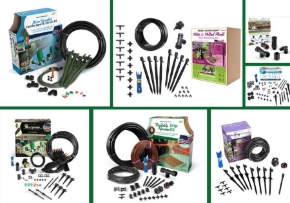Almost a month ago, we posted a picture on our Facebook page of a succulent garden that was planted in a small concrete cinder block wall. We took the picture at the EPCOT Flower and Garden show that was presented by HGTV.
Since that time, we have had a few questions as to how it was done. We didn't know, so we went and asked the garden experts at the show. They gave us a step-by-step on how they created the garden focal point - allowing us to share that knowledge with our awesome customers and anybody else who would want to add this fun feature to their landscape.
Step 1
Lay bottom course of concrete blocks, angling blocks occasionally to make plant pockets.
Step 2
Lay second course "stair step", so cells at the end of bottom course are exposed. Angle blocks occasionally to make plant pockets, but not directly over bottom plant pockets.
Step 3
Lay top course similar to others.
Step 4
Once you are happy with the design, remove sections and glue together with outdoor adhesive or mortar. Weight top cells with extra blocks until cured.
Step 5
Drive metal stakes through open cells and into ground, every 2-3 blocks, Partially fill staked cells with mortar if you need extra stability.
Step 6
Push a piece of hardware cloth (chicken wire will do) into the bottom of an open cell to hold up plants. Glue the wire in place with an outdoor adhesive.
Step 7
Cut a piece of landscape fabric to fit and lay it on top of the hardware cloth to hold in the soil. Use the outdoor adhesive to hold this in place as well.
Step 8
Fill the open cells with lightweight potting soil mix and plant with succulents or other drought-tolerant species of plants.
Step 9
Sit back and enjoy the wonderful new addition to your landscape.














